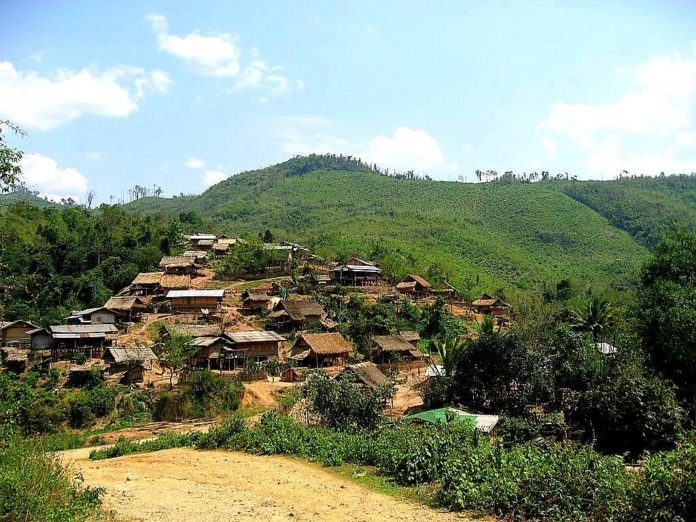Luang Namtha Province
Luang Namtha is a province of Laos located in the north of the country. Luang Namtha Province covers an area of 9,325 square kilometres (3,600 sq mi). The province borders with Yunnan, China to the north, Oudomxai Province to the east and southeast, Bokeo Province to the southwest, and Shan State, Burma to the northwest.
The province is one of the main sugar cane and rubber producing areas of Laos with numerous plantations.
The Mekong river (Nam Khong) constitutes the northwest border of the province. Three large rivers drain westwards/southwards into the Mekong; Nam Tha, Nam Fa and Nam Long. The Phou mountain range runs along the China/Lao border, consisting of mainly dry evergreen forest.

The Nam Ha National Biodiversity Conservation Area (NBCA) has dense forest covering 90% of the area. The conservation area was initially established covering an area of 677 square kilometres (261 sq mi) in 1991 which was subsequently enlarged to an area 2,244 square kilometres (866 sq mi) (entirely within the province) which borders with Shiang Yong Protected Area in Yunnan Province in China. It has been designated as an Asian Heritage Site. One issue of concern is of rubber cultivation in large areas.
The Nam Ha Important Bird Area (IBA), 1,845.2 square kilometres (712.4 sq mi) in size, is located within the Nam Ha NBCA. The topography is mountainous ridge. The habitat is dry evergreen forest, upper montane forest, and grasslands.
The ethnic groups reported are the Khamu, Akha (Eko), Hmong, Yao (Ioumien) and Lanetene. Lowland Lao people, Tai Lue, Thai Neua and Thai Dam weside in villages just outside the Nam Ha National Biodiversity Conservation Area and close to the historic town of Muang Sing.
Viengphoukha Coal Mine Co. Ltd., which is mining for lignite, is a major operating company in the province in the mineral sector, as of 2008.
Other industries are agriculture, wood processing, lignite and copper mining, handicraft production, transportation and tourism. Food items such as rice, corn cassava, peanuts, cardamom, rattan, bamboo, and bamboo shoots, jewel orchid, eaglewood, and ginger are used for internal consumption and sales A wide range of wildlife is also utilized for food consumption and as an economic resource.
In recent years rubber has become the center of attention in the policy discourse of Luang Namtha Province. By the end of 2006, a total of 12,585 ha of rubber has been planted in Luang Namtha, 88% of which is attributable to local smallholders or informal investors (from China as well as within Laos). The rest reflects formal investments by 11 rubber companies, 9 of which are Chinese.
Whether the topic is foreign investment, poverty alleviation, natural resource management, land use, value chain, or community life, rubber never fails to be part of the discussion. Some cheer it as a promising opportunity to lift a majority of villagers out of poverty; others worry about its potentially disastrous impact on the environment, while the actual benefits to Lao villagers remain both unpredictable and susceptible to abuse.
References:
- Wekipedia ‘Lung Namtha’: https://en.wikipedia.org/wiki/Luang_Namtha_Province
- Nafri ‘Rubber Boom in Lung Namtha’: http://lad.nafri.org.la/fulltext/1599-1.pdf



